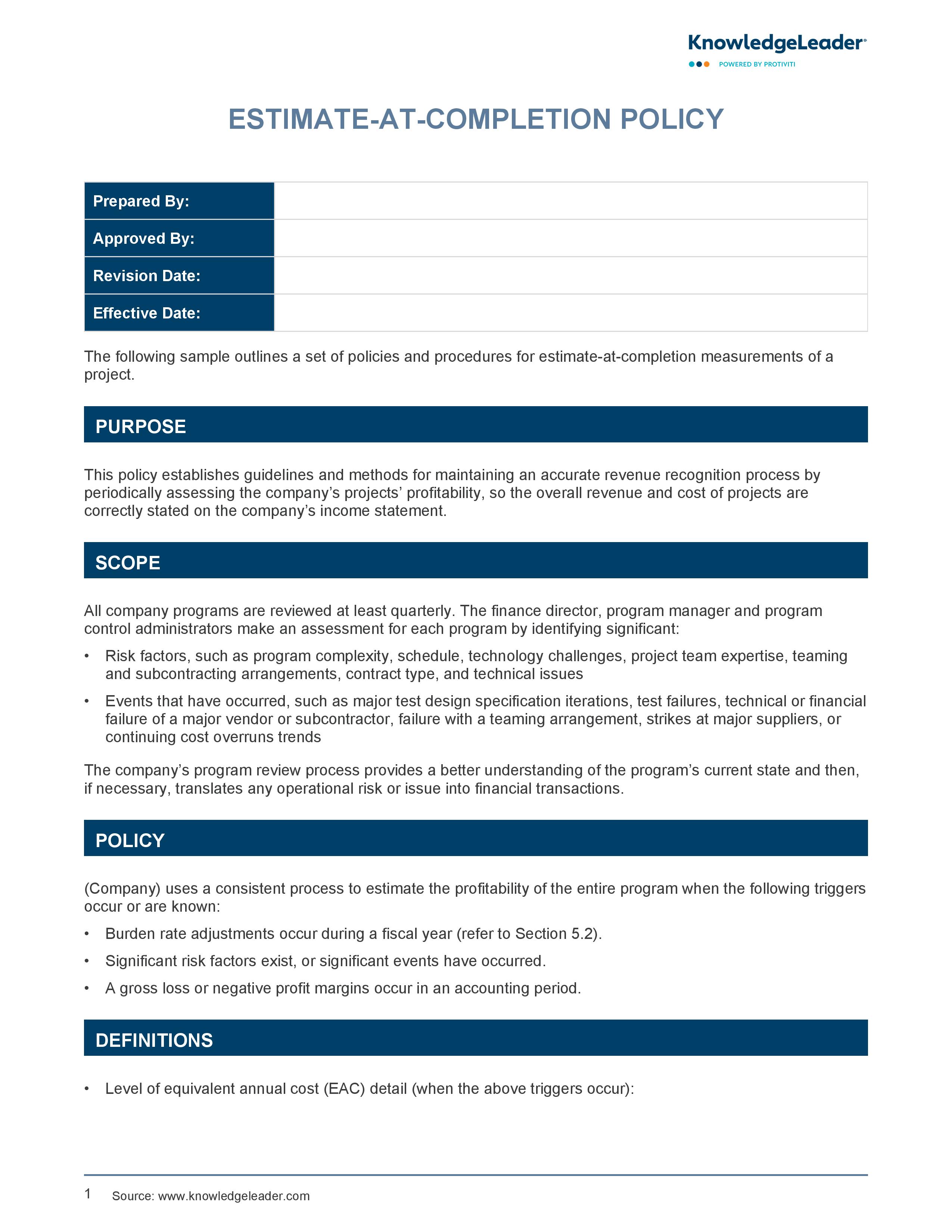Estimate-at-Completion Policy

Procedures for Estimating Project Completion
Our Estimate-at-Completion Policy document provides a structured approach to maintaining accurate revenue recognition and project profitability assessments within a company. It specifies that all company programs should be reviewed quarterly, with assessments made by the finance director, program manager and program control administrators. These assessments identify significant risk factors and events that may impact the project's financial standing, translating operational risks into financial transactions when necessary. This policy also details triggers for estimate-at-completion (EAC) updates, such as burden rate adjustments, significant risk factors or events, and occurrences of gross loss or negative profit margins.
Within this policy sample, you will find detailed procedures for preparing and timing EACs, emphasizing that the negotiated contract value forms the basis of the initial EAC position. It highlights the roles of various stakeholders, including the cost account manager, program manager, finance director and accounting manager, in reviewing and discussing EACs. Supporting information and explanations must be provided to allow for reasonable external review of the estimates. The document outlines the process for overhead and general and administrative (G&A) rate reviews, ensuring that actual activity and forecasts are periodically reviewed to fully absorb indirect costs. Additionally, the document includes sample exhibits, such as the EAC Summary and Approval Form and the EAC Management Reserve Risk Items, which provide templates for documenting significant changes, assumptions, risks, opportunities and corrective actions, along with the necessary approvals from relevant personnel.
Overall, this policy serves as a vital tool for ensuring compliance with established financial guidelines while enhancing their understanding of the company's project management and financial practices.
Sample procedures include:
- Direct costs must include a management reserve.
- EACs will be updated in a timely manner for significant contracts and contracts showing downward trends in cost, performance or schedule.
- During the fiscal year, the finance staff periodically reviews actual activity and forecasts overhead and G&A rates through year-end.
- The general manager and the finance director review and approve company’s budgeted burden rates and periodic forecasts.